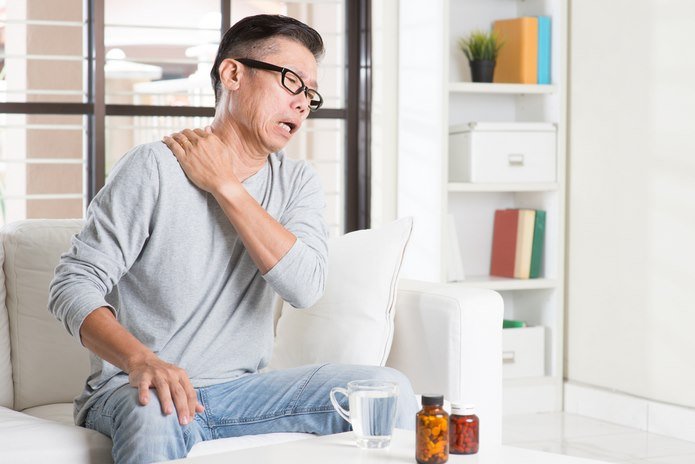Pain and Stiffness
With ankylosing spondylitis, you may have constant pain, aches and stiffness in the hips, lower back, and buttocks that may continue for more than 3 months. The pain of ankylosing spondylitis typically starts around the sacroiliac joints, where the ilium joins the sacrum (the lowest part of the spine) of the pelvis in the lower back region. It might hurt more in the morning when you wake up. You might also feel stiffness and pain in other body joints as well such as your jaw, chest, tendons, and ligaments.
Chest pain or more commonly known as “strapped in’ feeling is one of the most common symptoms that occur in ankylosing spondylitis. It usually starts as mild throbbing chest ache that gradually develops into moderate chest pain. If ankylosing spondylitis starts affecting at chest level, it can cause movements at the joints between the breastbone and ribs comfortable which makes it extremely challenging for you to take a deep breath. It also causes moderate tenderness in sternum and may make you feel short of breath even on a gentle activity. This chest pain is usually aggravated by coughing and sneezing.
Ligaments are the connective tissue that connects two muscles or a muscle group while tendons connect bones and muscles. Besides bones and muscles, ankylosing spondylitis can also affect body connective tissues and cause inflammation.
Tendinitis (swelling of the tendon) in the region behind or below the heel, such as that of the Achilles tendon can trigger pain and stiffness. It can lead to abnormal gait and difficulty walking. Similar is the case with other body tendons and ligaments. The tendons most commonly involved include tendons of the heel, foot, tibia, and biceps.
In many body conditions, exercise generally aggravates pains and muscle strains while rest eases them. However, this is the opposite with ankylosing spondylitis. Moderate exercise such as aerobic activities and sprinting can not only relieve back pain, but also help with sleep and bowel movements.
This is also a reason why pains associated with ankylosing spondylitis are frequently worse in the early morning hours. Patients usually feel better with time as they become active. Because exercise brings relief, people suffering from AS should try and lead as active a life as possible.

